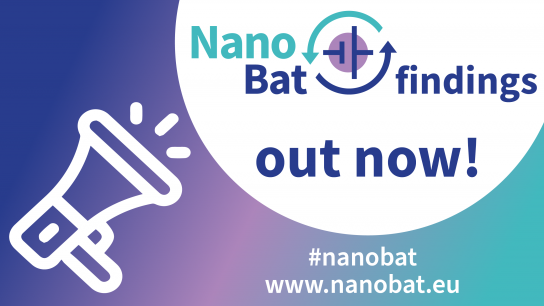NanoBat successfully comes to an end with innovative findings
The newly developed nanotechnology solutions for optimised battery production and nanoscale testing increases competitiveness of the e-mobility battery sector in Europe
After three intense years of ground-breaking research, the EU research project NanoBat ends with revolutionary solutions for battery production in Europe and beyond. The consortium of 13 academic and industrial partners have jointly developed a novel nanotechnology toolbox for quality testing of Li-on and beyond Lithium batteries with a particular focus on the nanoscale structure of the SEI (solid electrolyte interphase) layer – an electrically insulated layer preventing ongoing electrolyte decomposition and responsible for battery performance and safety.
“With the new NanoBat technologies European manufacturers and SMEs will be adequately equipped to create a competitive manufacturing value chain for sustainable battery cells in Europe”, says project Coordinator Dr Ferry Kienberger from Austria-based industry partner Keysight Technologies.
The findings will impact various future endeavours: With the development of the now patented Keysight hardware EIS (electrochemical impedance spectroscopy), new products can be commercialised. The same is true for the QWED software modelling for integration in QuickWave and the newly established QWED GHz scanner. Further advances provide the base for future development. This comprises the high-throughput measure station developed jointly by Keysight and Kreisel, the fast electrochemical cycle test implemented at IMDEA, the new virtual quality gate data analytics prepared at Technische Universität Braunschweig, and the new scanning probe techniques designed by Ruhr-Universität Bochum and University of Burgos. Last but not least, Pleione Energy has established a battery pilot line for pouch cells and supercapacitors available to the wider battery community. Over time, the green production methods can be scaled up through the involvement of global players in the automotive industry and spread to additional markets, such as speciality batteries for satellites, green buildings, GHz-materials or modelling software.
The findings will also foster the EU’s industrial competitiveness and innovation capacity and have a positive impact on the circular economy and the environmental footprint of battery production, as more precise testing methods result in a decrease of energy and raw material use and waste.
Further information on the results of the NanoBat project are available on the website (https://nanobat.eu/findings) including short videos detailing the individual innovations.
